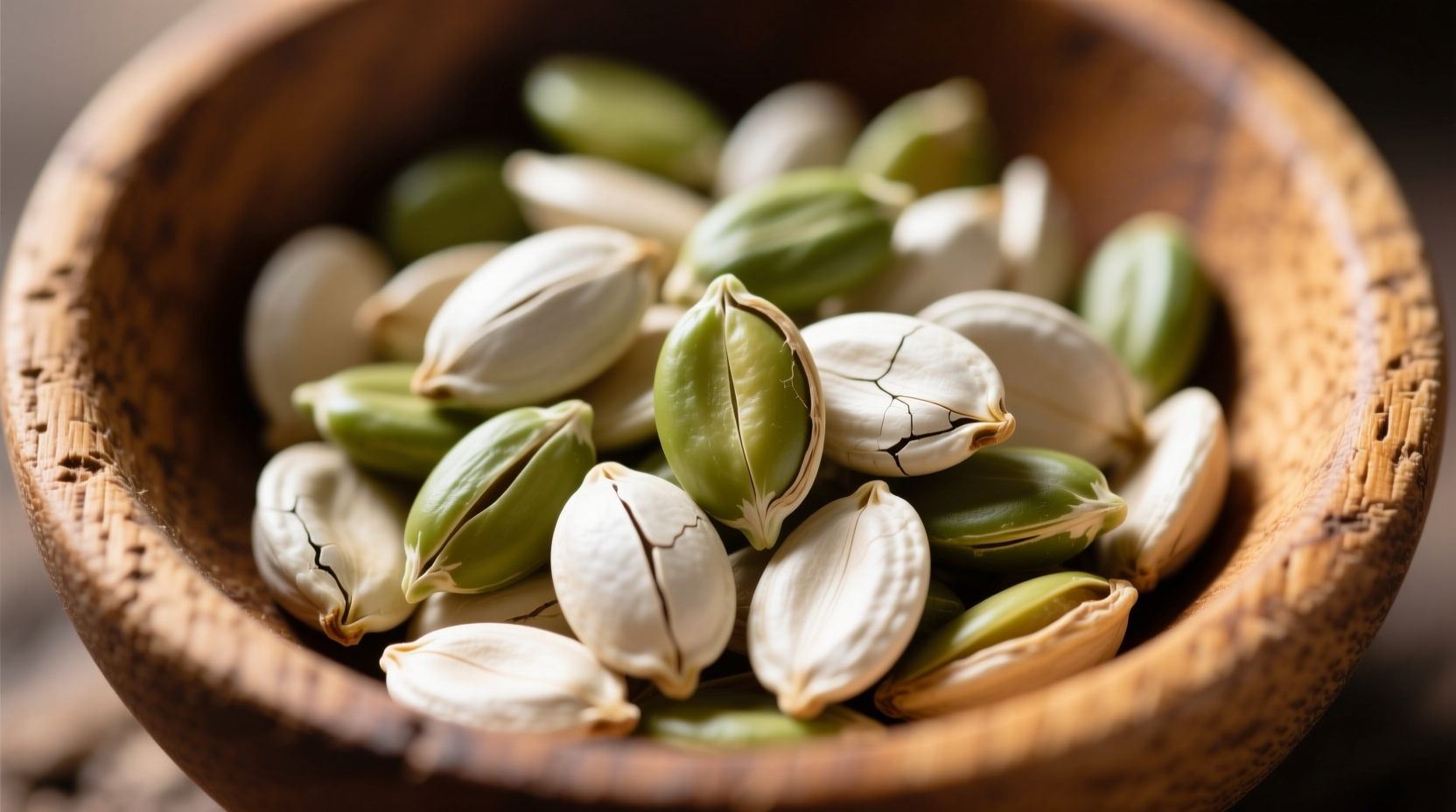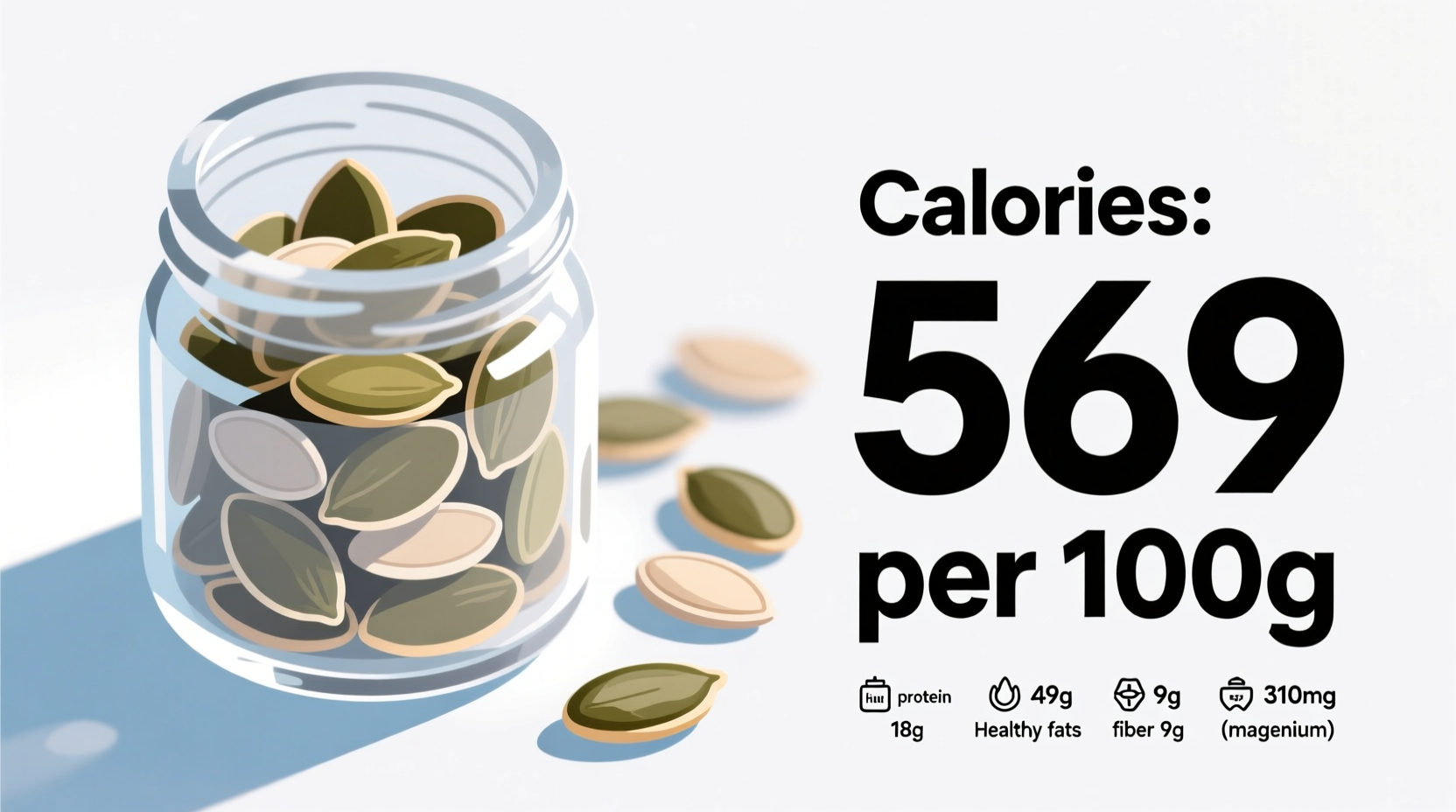When tracking your daily nutrition, understanding the precise calorie content of pepita seeds (also known as pumpkin seeds) helps you make informed dietary choices. Whether you're managing weight, building muscle, or simply maintaining a healthy lifestyle, these versatile seeds deliver impressive nutritional benefits alongside their caloric value.
Nutritional Breakdown: What Those Calories Deliver
Calories alone don't tell the whole story. The 158 calories in a standard one-ounce serving of raw pepita seeds come packaged with remarkable nutritional density. Unlike empty-calorie snacks, pepitas provide substantial amounts of essential nutrients that support overall health.
| Nutrient | Amount per 1 oz (28g) | % Daily Value |
|---|---|---|
| Calories | 158 | 8% |
| Total Fat | 13g | 17% |
| Saturated Fat | 2.4g | 12% |
| Protein | 8.5g | 17% |
| Carbohydrates | 5g | 2% |
| Dietary Fiber | 1.7g | 6% |
| Magnesium | 151mg | 36% |
| Zinc | 2.2mg | 20% |
Data sourced from the USDA FoodData Central database, the authoritative government resource for nutritional information. This comprehensive profile shows why pepita seeds represent exceptional nutrient density relative to their calorie count.
Raw vs. Roasted: How Preparation Affects Calorie Content
Many consumers wonder whether roasting pepita seeds changes their calorie content. According to research published in the Journal of Food Composition and Analysis, the roasting process causes minimal changes to the fundamental nutritional profile:
- Raw pepitas: 158 calories per ounce
- Dry-roasted pepitas: 160 calories per ounce
- Oil-roasted pepitas: 170-180 calories per ounce (depending on oil absorption)
The slight increase in roasted versions comes primarily from minor moisture loss during heating, which concentrates the nutrients and calories in a smaller physical volume. When oil is used for roasting, the additional calories come from the absorbed oil itself.

Comparing Pepita Calories to Other Popular Seeds
Understanding how pepita calories compare to other seeds helps you make strategic dietary choices. The following comparison shows calorie density alongside key nutritional benefits:
| Seed Type | Calories per oz | Protein (g) | Key Nutrients |
|---|---|---|---|
| Pepita seeds | 158 | 8.5 | Magnesium, zinc, iron |
| Chia seeds | 138 | 4.7 | Omega-3, fiber, calcium |
| Flax seeds | 150 | 5.1 | Omega-3, lignans, fiber |
| Sunflower seeds | 164 | 5.8 | Vitamin E, selenium, folate |
This comparison reveals that pepita seeds offer superior protein content compared to most other popular seeds, along with exceptional magnesium levels. While calorie counts are relatively similar across seed varieties, the specific nutrient profiles vary significantly.
Practical Applications: Incorporating Pepitas into Your Diet
Knowing the calorie content is just the first step. Here's how to strategically include pepita seeds in various dietary patterns:
For Weight Management
The protein and fiber content in pepita seeds promotes satiety. A study in the European Journal of Clinical Nutrition found that participants who included moderate portions of seeds like pepitas in their diet reported less hunger between meals. For weight management, stick to one ounce (about 3 tablespoons) as a snack or salad topper.
For Athletes and Active Individuals
With 8.5g of complete protein per ounce, pepita seeds provide valuable muscle-supporting nutrients. The magnesium content also helps with muscle function and recovery. Add them to post-workout smoothies or trail mixes for optimal benefit.
Daily Serving Suggestions
- Breakfast: 1 tbsp (approx. 50 calories) sprinkled on oatmeal or yogurt
- Lunch: 2 tbsp (approx. 100 calories) in salads for crunch and nutrition
- Snack: 1 oz (158 calories) with a piece of fruit for balanced energy
- Dinner: 1 tbsp (50 calories) as garnish for soups or roasted vegetables
Common Misconceptions About Pepita Calories
Several myths persist about seed calories that deserve clarification:
"All Fat Calories Are Bad"
Approximately 80% of calories in pepita seeds come from fat, but these are predominantly healthy unsaturated fats. Research from the American Heart Association confirms that replacing saturated fats with unsaturated fats from sources like pepita seeds supports cardiovascular health.
"Seeds Will Make You Gain Weight"
While calorie-dense, studies show that moderate consumption of nutrient-dense seeds like pepitas doesn't lead to weight gain. A meta-analysis in Obesity Reviews found that regular nut and seed consumption was associated with lower body weight and reduced weight gain over time.
"Raw Is Always Better Than Roasted"
While raw pepitas preserve all natural nutrients, dry-roasted versions offer similar nutritional value. The key difference comes with oil-roasted varieties, which add extra calories from the absorbed oil. For maximum benefit with minimal added calories, choose dry-roasted or roast your own at home.
Maximizing Nutrient Absorption From Pepita Seeds
To get the most nutritional value from your pepita seeds, consider these evidence-based tips:
- Pair with vitamin C-rich foods: The iron in pepitas absorbs better when consumed with vitamin C sources like citrus fruits or bell peppers
- Grind for better absorption: Lightly grinding pepitas can improve the bioavailability of zinc and other minerals
- Store properly: Keep in an airtight container in the refrigerator to prevent the healthy fats from oxidizing
- Soak before eating: Soaking for several hours may reduce phytic acid content, potentially improving mineral absorption
Understanding the calorie content of pepita seeds within the context of their complete nutritional profile transforms them from a simple snack into a strategic dietary component. These small seeds deliver remarkable nutritional density that supports various health goals when consumed as part of a balanced diet.











 浙公网安备
33010002000092号
浙公网安备
33010002000092号 浙B2-20120091-4
浙B2-20120091-4